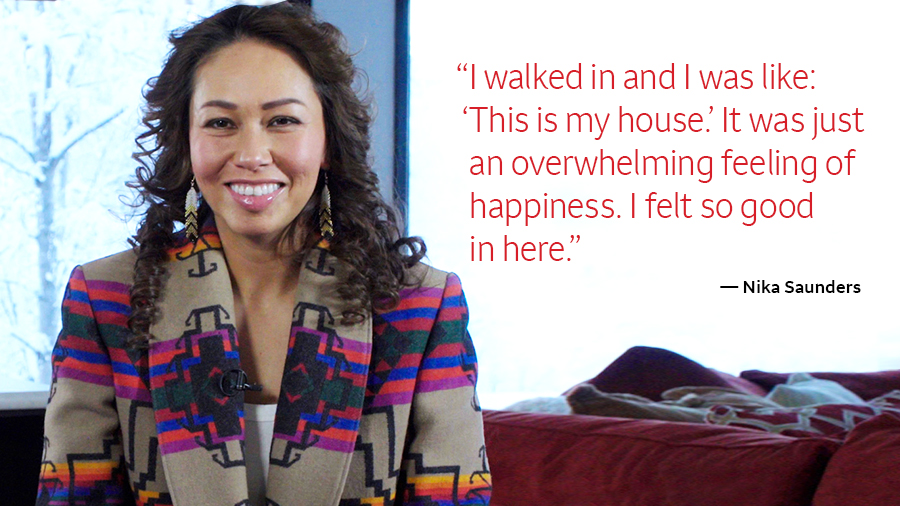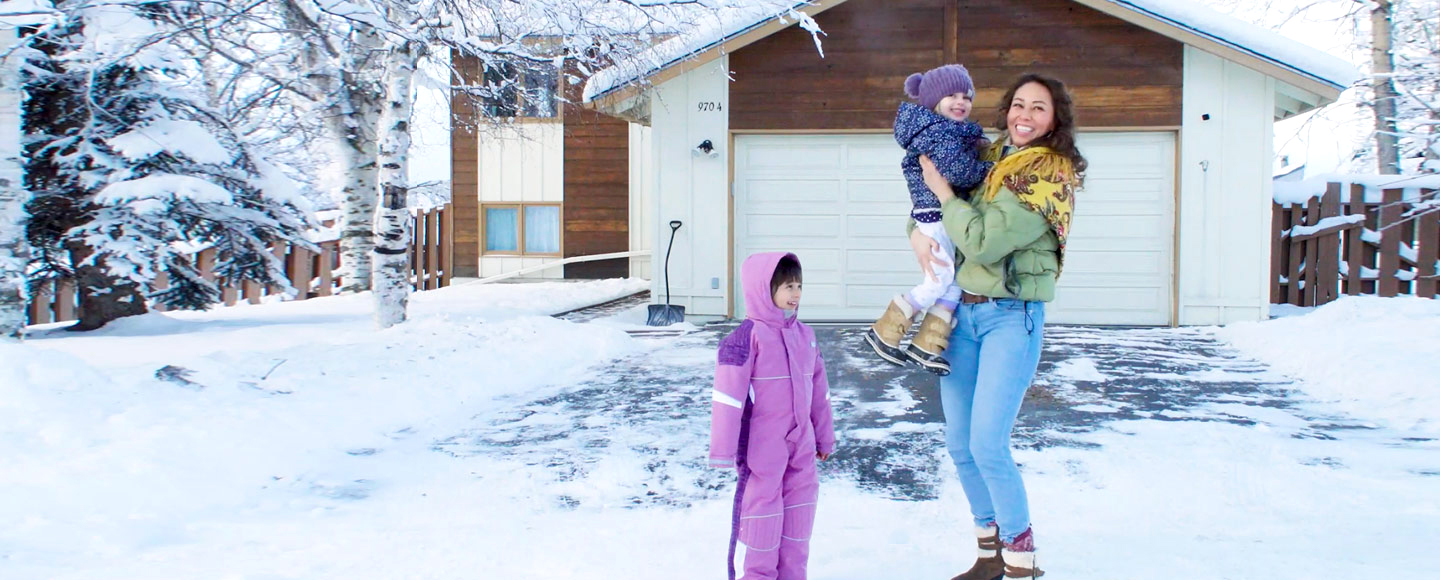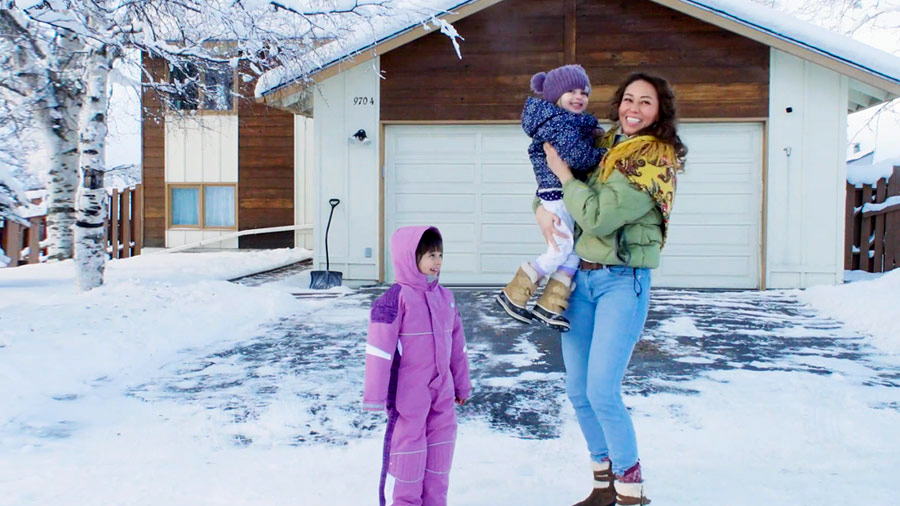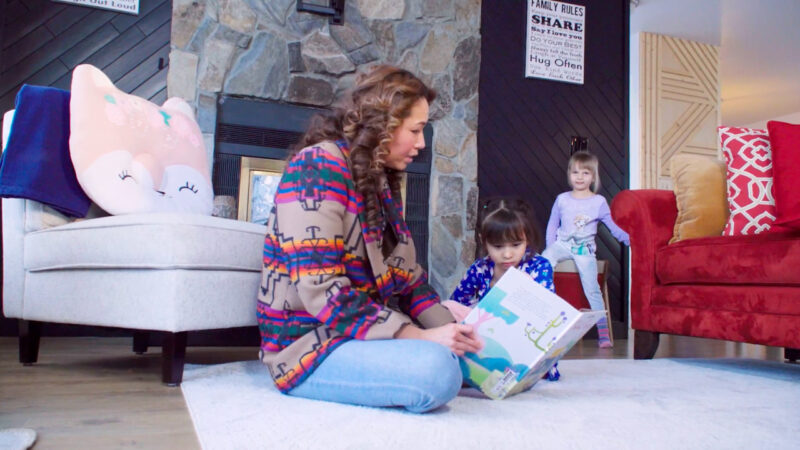Program helps Native Americans buy a home, enhance financial acumen
Nika Saunders, a U.S. National Guardsman and mother of three, purchased her first home in Anchorage, Alaska, thanks to support from the Cook Inlet Lending Center and Wells Fargo.
It’s 5:45 a.m. Nika Saunders, already outfitted in her camouflage uniform, laces up her combat boots. With the high expected to be just 8° F today, she stops by the coat rack to put on her winter gear before heading out into the snowy darkness from the home she purchased seven months before in Anchorage, Alaska — fulfilling the dream of homeownership she’d had “since forever.” With sunrise still four hours away, she heads to Fort Richardson, where she works in human resources for the U.S. Army National Guard.
From the reservation to the military
Before joining the military in 2010, Saunders lived on her mother’s Northern Cheyenne Tribe reservation in Montana. Her father is a citizen of the Tohono O’odham Nation of Arizona.
She explained that “you don’t leave the reservation unless you join the military, you have a rich family member somewhere, or you get a scholarship and go to college.” Without the military, she says “I would probably have been confined to the reservation boundaries.”
Saunders is determined to be a strong role model and show her three daughters they can steer their own future. In addition to serving in the military, Saunders set out to buy a house and obtain a nursing degree.
“I’ve always wanted to have somewhere to hang my hat and have a place to call my own,” she said. “It wasn’t just about homeownership, but about bettering myself and my life. I want to have a degree so my girls see their mom has a degree and say: ‘She did it. And she has a home.’”
Financial education and grants lead to homeownership
But Saunders faced challenges when looking for a home. Housing inventory decreased. Prices increased. And getting prequalified for a mortgage became an unexpected stumbling block — causing her to question whether homeownership was feasible.
“The debt-to-income calculation always put me out of the running,” she said. “I never understood it. I’m like, ‘This can’t be. My credit’s amazing. I can afford things. Why can’t I afford a mortgage?’”
Fortunately, Saunders heard about the Cook Inlet Lending Center and its Individual Development Account, or IDA, program for Alaska Native and American Indian homebuyers.
Jeff Tickle, general manager of the Cook Inlet Lending Center, said the income-based IDA program helps Alaska Natives and American Indians prepare for homeownership at their own pace, taking six months to two years to complete. IDA program participants:
- Earn a $4,000 matching grant once they save $1,000, giving them $5,000 that can be used toward their down payment or closing costs
- Receive one-on-one financial counseling for the duration of the program — and for several months beyond graduation
- Are required to take 15 hours of financial education to ensure they have the financial skills needed to stay in their home after closing

As part of the company’s $50 million commitment to tribal communities, Wells Fargo donated $200,000 to the Cook Inlet Lending Center — enabling the organization to expand its IDA program throughout the state of Alaska, according to Katie Rollyson, Wells Fargo Community Relations consultant.
Confidence to pursue the dream of homeownership
In the United States, according to Rollyson, the poverty rate among Native Americans is 25.4% versus 8.1% for the white population. And homeownership among Alaska Natives is 13% lower than among white Alaskans, according to data by Prosperity Now.
These realities make the work of the Cook Inlet Lending Center all the more important.
“Without the tools and resources, without the down payment assistance, loans, and grants that funders such as Wells Fargo have provided over the years, some of these folks would not have been able to pursue homeownership,” Tickle said. “And without the guidance and continued high touches that Renate [Houser, IDA program coordinator] provides throughout the program, they may not have developed the confidence to actually move forward with purchasing a home.”
Saunders, one of 13 people to graduate from the IDA program since its inception in 2019, knew she’d found her place when she first set foot in it. She loves her three-story home’s large windows that allow her to see the mountains, sunsets, and part of the ocean.
“I walked in and I was like: ‘This is my house.’ It was just an overwhelming feeling of happiness. I felt so good in here.”









